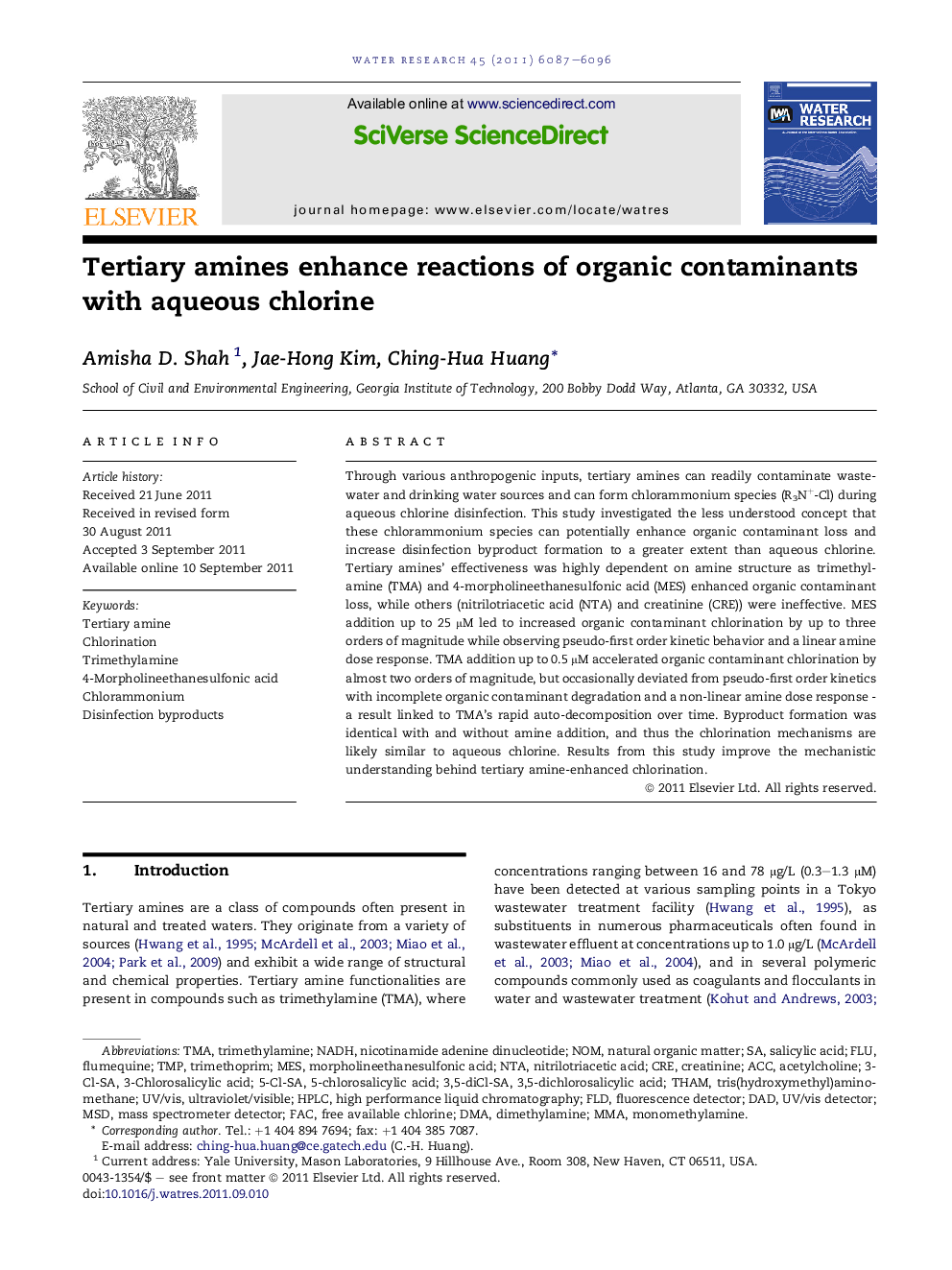| کد مقاله | کد نشریه | سال انتشار | مقاله انگلیسی | نسخه تمام متن |
|---|---|---|---|---|
| 4482692 | 1316866 | 2011 | 10 صفحه PDF | دانلود رایگان |

Through various anthropogenic inputs, tertiary amines can readily contaminate wastewater and drinking water sources and can form chlorammonium species (R3N+-Cl) during aqueous chlorine disinfection. This study investigated the less understood concept that these chlorammonium species can potentially enhance organic contaminant loss and increase disinfection byproduct formation to a greater extent than aqueous chlorine. Tertiary amines’ effectiveness was highly dependent on amine structure as trimethylamine (TMA) and 4-morpholineethanesulfonic acid (MES) enhanced organic contaminant loss, while others (nitrilotriacetic acid (NTA) and creatinine (CRE)) were ineffective. MES addition up to 25 μM led to increased organic contaminant chlorination by up to three orders of magnitude while observing pseudo-first order kinetic behavior and a linear amine dose response. TMA addition up to 0.5 μM accelerated organic contaminant chlorination by almost two orders of magnitude, but occasionally deviated from pseudo-first order kinetics with incomplete organic contaminant degradation and a non-linear amine dose response - a result linked to TMA’s rapid auto-decomposition over time. Byproduct formation was identical with and without amine addition, and thus the chlorination mechanisms are likely similar to aqueous chlorine. Results from this study improve the mechanistic understanding behind tertiary amine-enhanced chlorination.
Figure optionsDownload high-quality image (51 K)Download as PowerPoint slideHighlights
► Tertiary amines form highly reactive chlorammonium (R3N+-Cl) ions during chlorination.
► R3N+-Cl species can enhance reaction of organic contaminants with aqueous chlorine.
► The impact of R3N+-Cl species is highly dependent on the amine structure.
► Trimethylamine and 4-morpholineethanesulfonic acid strongly enhance chlorination.
► Mechanistic study suggests similar reaction pathways with R3N+-Cl and with HOCl.
Journal: Water Research - Volume 45, Issue 18, 15 November 2011, Pages 6087–6096